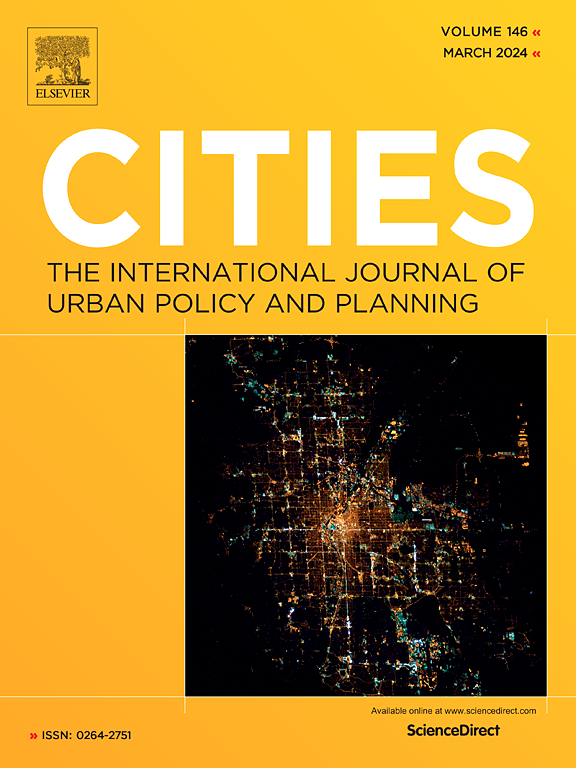Lived experiences of the x-minute creative city: Front and back spaces of creative work
IF 6
1区 经济学
Q1 URBAN STUDIES
引用次数: 0
Abstract
How do chronogeographies of creative work map onto, limit or exceed notions of the x-minute city? Prompted by this question, our paper draws on research examining lived experiences of creative work in Sydney, Australia. Through time-based spatial analysis of everyday spaces of diverse creative workers (musicians, theatre producers, actors, playwrights, visual artists, and studio managers), detailed geographies of work are revealed. Rather than rely upon single worksites, creative work involves multiple tasks undertaken across many worksites (av = 23 each). Attentive to the particulars of the creative labour process, we map sites of production, performance, networking, supplies, and inspiration. Qualitative GIS analysis confirms that centripetal effects associated with the creative sector cohere with x-minute city thinking. Yet, these centripetal effects were not universal, being most evident in the city's preeminent cluster, where “back spaces” of creativity—inconspicuous worksites of production, recording, and rehearsal—coalesced in mundane spaces. Concurrently, in a city beleaguered by merciless property markets, centrifugal effects associated with gentrification and loss of low-rent back spaces confront x-minute city potential. Aligning x-minute city concepts with the creative sectors requires more than precinct activation policies. It requires grounded qualitative-spatial research to reveal topologies of creative work, and the political-economic dynamics undermining them.
求助全文
约1分钟内获得全文
求助全文
来源期刊

Cities
URBAN STUDIES-
CiteScore
11.20
自引率
9.00%
发文量
517
期刊介绍:
Cities offers a comprehensive range of articles on all aspects of urban policy. It provides an international and interdisciplinary platform for the exchange of ideas and information between urban planners and policy makers from national and local government, non-government organizations, academia and consultancy. The primary aims of the journal are to analyse and assess past and present urban development and management as a reflection of effective, ineffective and non-existent planning policies; and the promotion of the implementation of appropriate urban policies in both the developed and the developing world.
 求助内容:
求助内容: 应助结果提醒方式:
应助结果提醒方式:


